Home > Auctions > 3 - 8 September 2024
Ancient Art, Antiquities, Natural History & Coins
Auction Highlights:
Private collection, Switzerland.
Acquired from Gorny & Mosch, Munich, Germany, in 2013.
Ex SVV Prunier, 11 July 2021, no.76 (part).
Cf. Burollet, T. (ed.), Les Francs: Précurseurs de l'Europe, Paris, 1997, item 172 for type.
From a North Yorkshire, UK, private collection.
Acquired from Adam Partridge Auctioneers, Macclesfield, UK.
Property of Mr A.B., an American collector.
Cf. MacGregor, A. et al., A Summary Catalogue of the Continental Archaeological Collections, Oxford, 1997, item 3.18; Nerman Die Wikingerzeit Gotlands II Tafel11 4abc, Tafel12 2-4abc; British Museum, reference number 1921,1101.114.
From the private collection of a London gentleman, from his grandfather's collection formed before the early 1970s.
For similar brooches see Arbman, H., Birka I: Die Gräber, Uppsala, 1940, pls.58ff. and in particular 62-63, 67; see also Graham-Campbell, J. & Kidd, D., The Vikings, London, 1980, figs.52-53, for similar brooches from Norway.
The most characteristic items of Viking period women's jewellery are oval brooch pairs, called 'tortoise brooches' in the literature. As in this example, the brooches themselves were usually connected by swags of coloured beads or by chains supporting tools such as tweezers or a small knife, as well as amulets.
Found near Holt, Norfolk, UK.
From an old private collection of Norfolk, UK, gentleman, formed since 1998.
Cf. Hattatt, R., Ancient Brooches and Other Artefacts, Oxford, 1989, item 1692.
Found Lincolshire, UK.
From an old private collection of Norfolk, UK, gentleman, formed since 1998.
Cf. MacGregor, A. & Bolick, E., A Summary Catalogue of the Anglo-Saxon Collections (Non-Ferrous Metals), Oxford, 1993, item 47.19, for type.
Located whilst searching with a metal detector and archaeologically excavated by Norfolk Archaeology Unit, near Harling, Norfolk, UK, on Wednesday 8th November 2023.
Accompanied by a copy of the British Museum's Portable Antiquities Scheme (PAS) report no.NMS-C1D619 which includes a photograph of the cauldron in situ before excavation.
This lot has been checked against the Interpol Database of stolen works of art and is accompanied by search certificate no.12165-219623.
A similar compete vessel is recorded on PAS database as LVPL-73F49, dated between 14th-16th century.
Exhibited at the Harwich Museum, Harwich, Essex, UK, 19th June-9th September 2024; accompanied by a copy of a photograph of the artefacts on display.
Bronze cauldrons played a role in ritual practices in the Middle Ages and beyond. It appears that many of the bronze cauldrons have been deliberately deposited, although the reasons for this were not always clear. There are strong indications that this often took place at the beginning of a large-scale project. This may have been the construction of a castle or a rampart, of a city wall, the building of a dyke, a dangerous crossing of the sea, the cultivation of a piece of farmland or the reclamation of a peat bog. For all types of projects, salvation and blessing could be requested in the form of a deliberate deposit of a bronze cauldron. This custom is directly comparable with the Medieval ritual of placing coins under the foundation stone of a building.
Acquired Delchar, London, 2011.
Private collection, Suffolk, UK.
This lot has been checked against the Interpol Database of stolen works of art and is accompanied by a search certificate number no.12291-221716.
See Tomasi, M., La Bottega degli Embriachi, Museo Nazionale del Bargello, Florence, 2001.
The Bottega degli Embriachi was an important producer of artworks carved in bone (and occasionally ivory) in a framework of inlaid wood. It was active in Northern Italy from circa 1375 A.D. until circa 1433. It relocated from Florence to Venice about 1395. The Bottega was especially known for 'marriage caskets' with tall columnar lids, with carved bone figural panels. Some of the panels here are evidently Christian (the figure with the cross and chalice) while others are perhaps purely symbolic (Justice with sword and scales) and some are simply puzzling (e.g. the three-faced figure with serpents).
Found North Norfolk, UK.
From an old private collection of Norfolk, UK, gentleman, formed since 1998.
See Taburet-Delahaye, E. & Boehm, B.D., L'Œuvre de Limoges, Paris, 1995, for discussion.
Found near Horsham St. Faith, Norfolk, UK.
From an old private collection of Norfolk, UK, gentleman, formed since 1998.
Accompanied by a copy of the British Museum's Portable Antiquities Scheme (PAS) report no.NMS-EED2A2.
Found Kettering, Northamptonshire, UK.
From an old private collection of Norfolk, UK, gentleman, formed since 1998.
Cf. Robinson, J.P., A late medieval pilgrim badge from Chaucer House, Tabard Street, SE1 London, 1989; also cf. The British Museum's Portable Antiquities Scheme (PAS) no.PUBLIC-731EA7.
Mercier & Cie, 16 April 2023, no.214.
This lot has been checked against the Interpol Database of stolen works of art and is accompanied by a search certificate number no.12292-221721.
Acquired in 2002 from a private collection in Lisbon, Portugal.
Ex central London gallery.
205 - 216 of 3369 LOTS

.jpg)

.jpg)
.jpg)
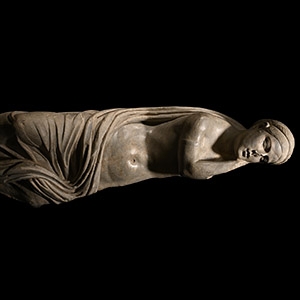
.jpg)
.jpg)

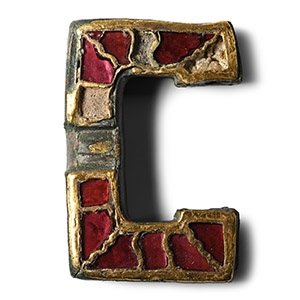
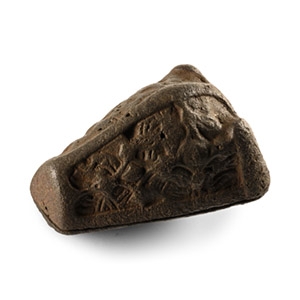

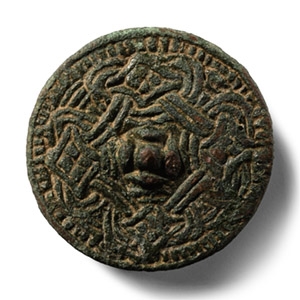
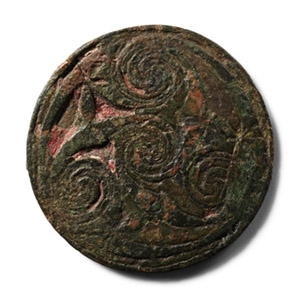
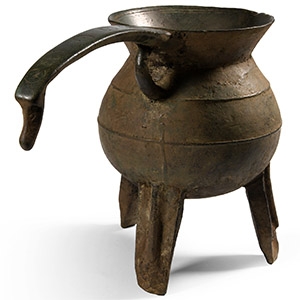
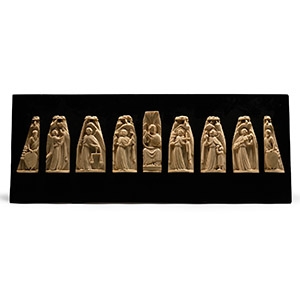
.jpg)

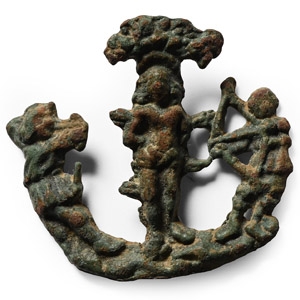
.jpg)
.jpg)



